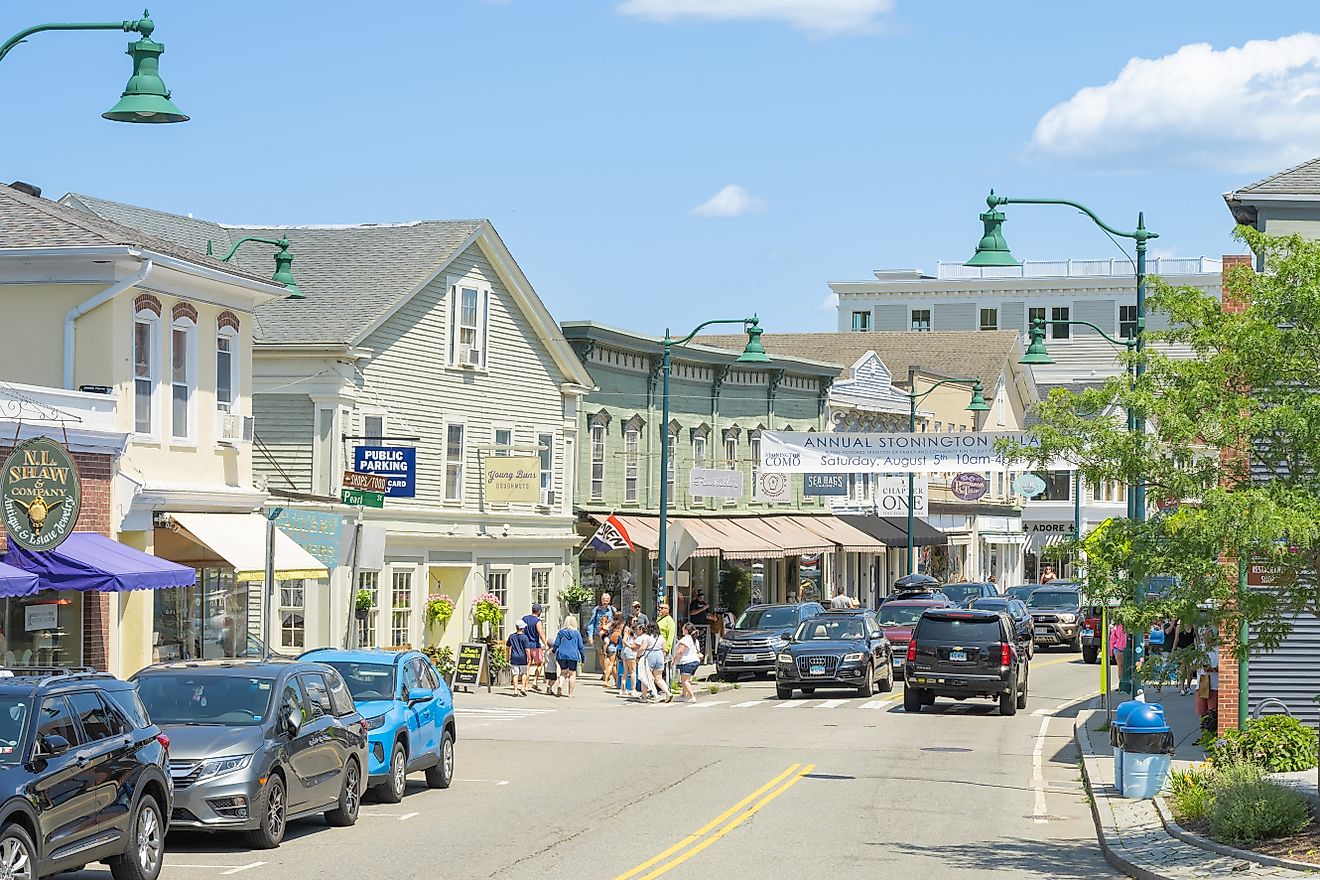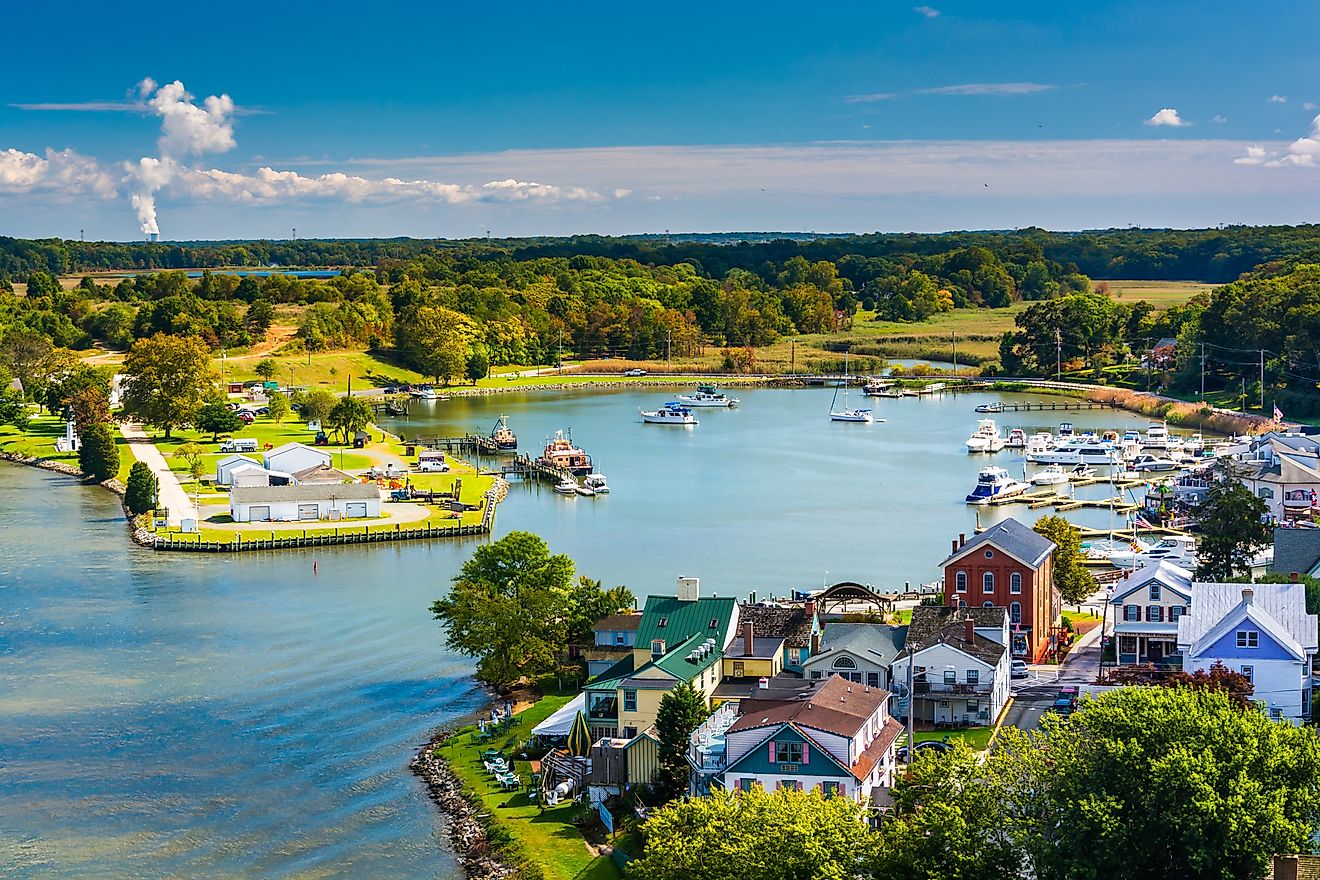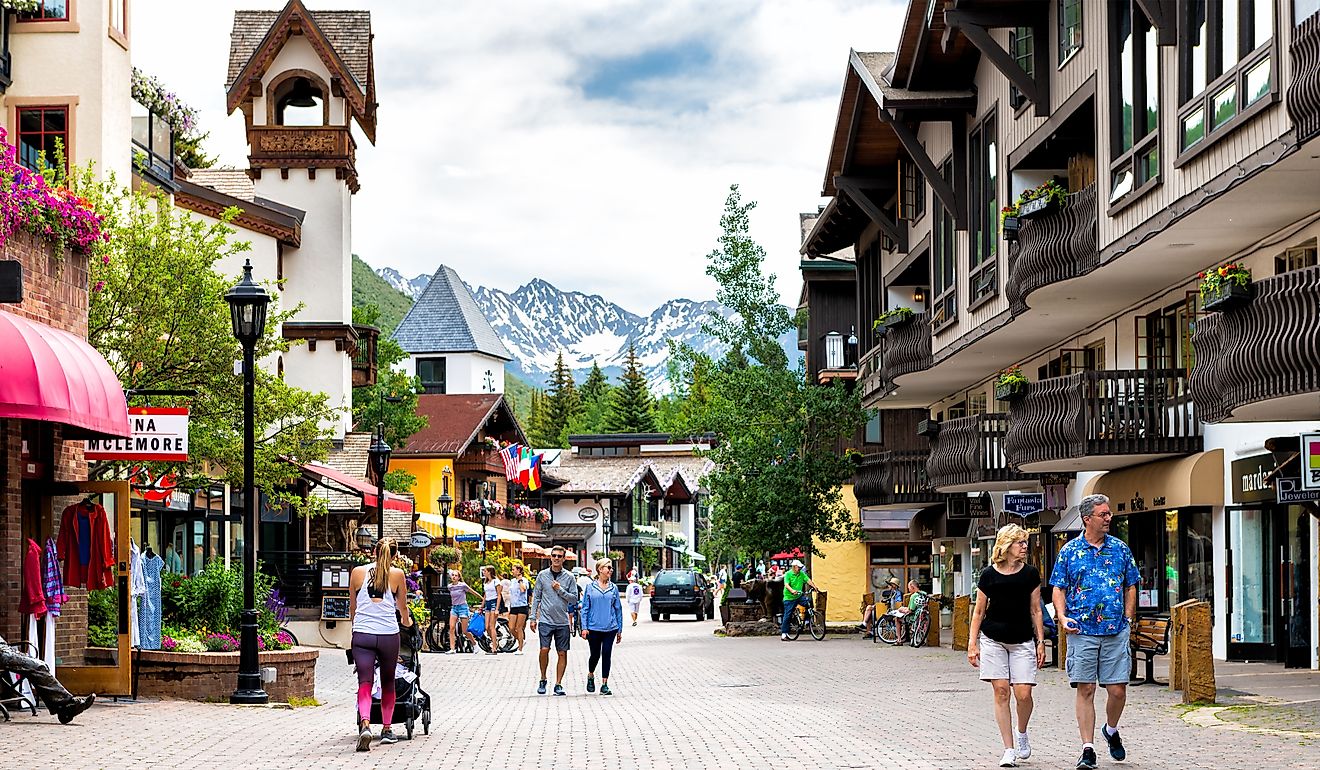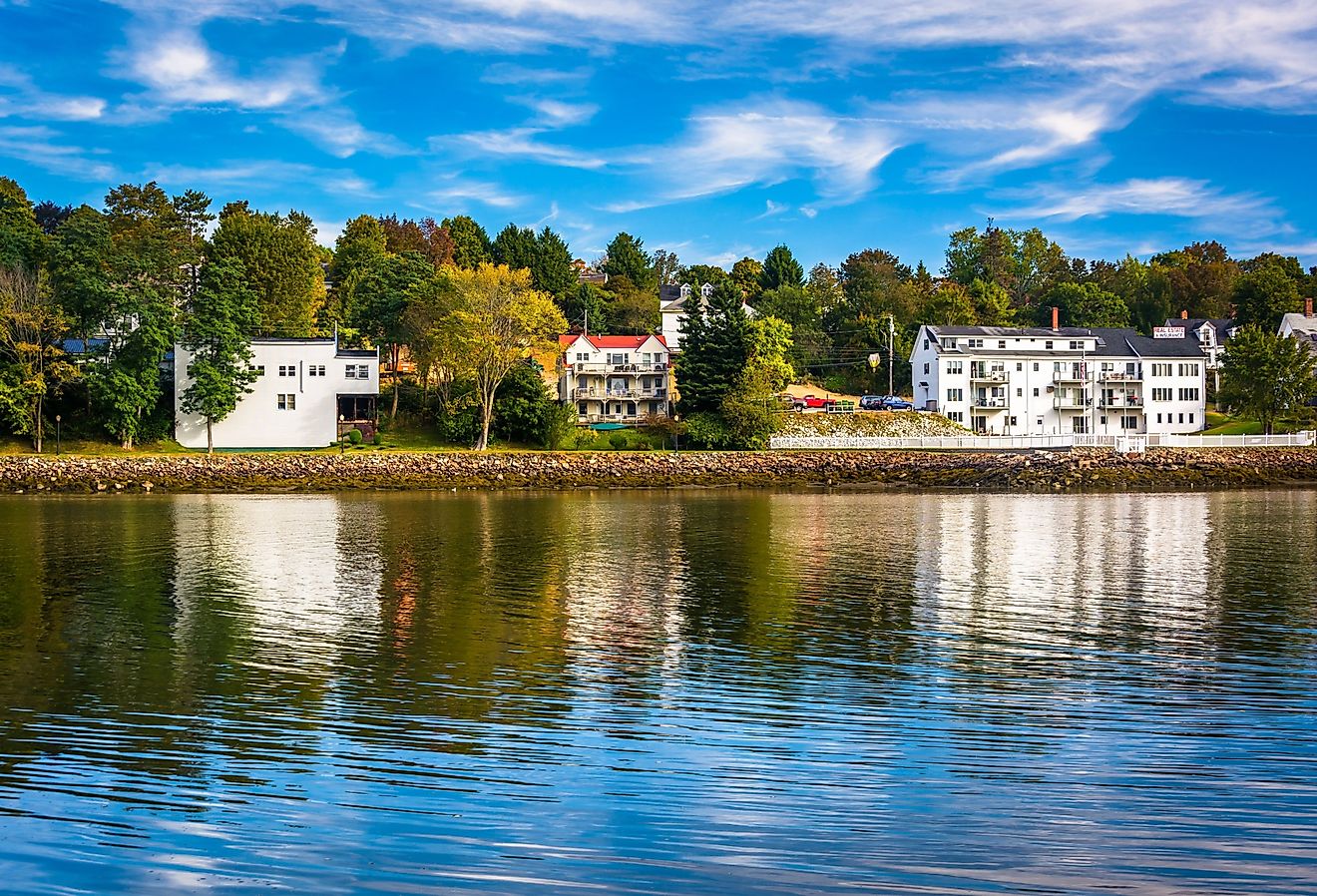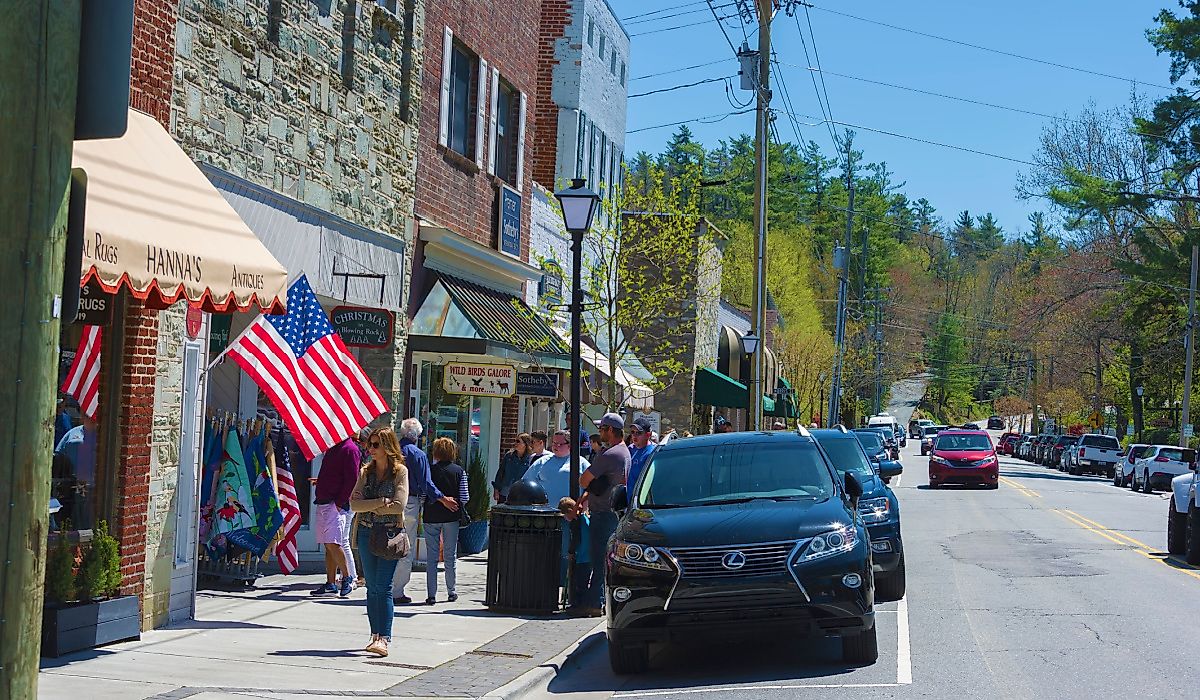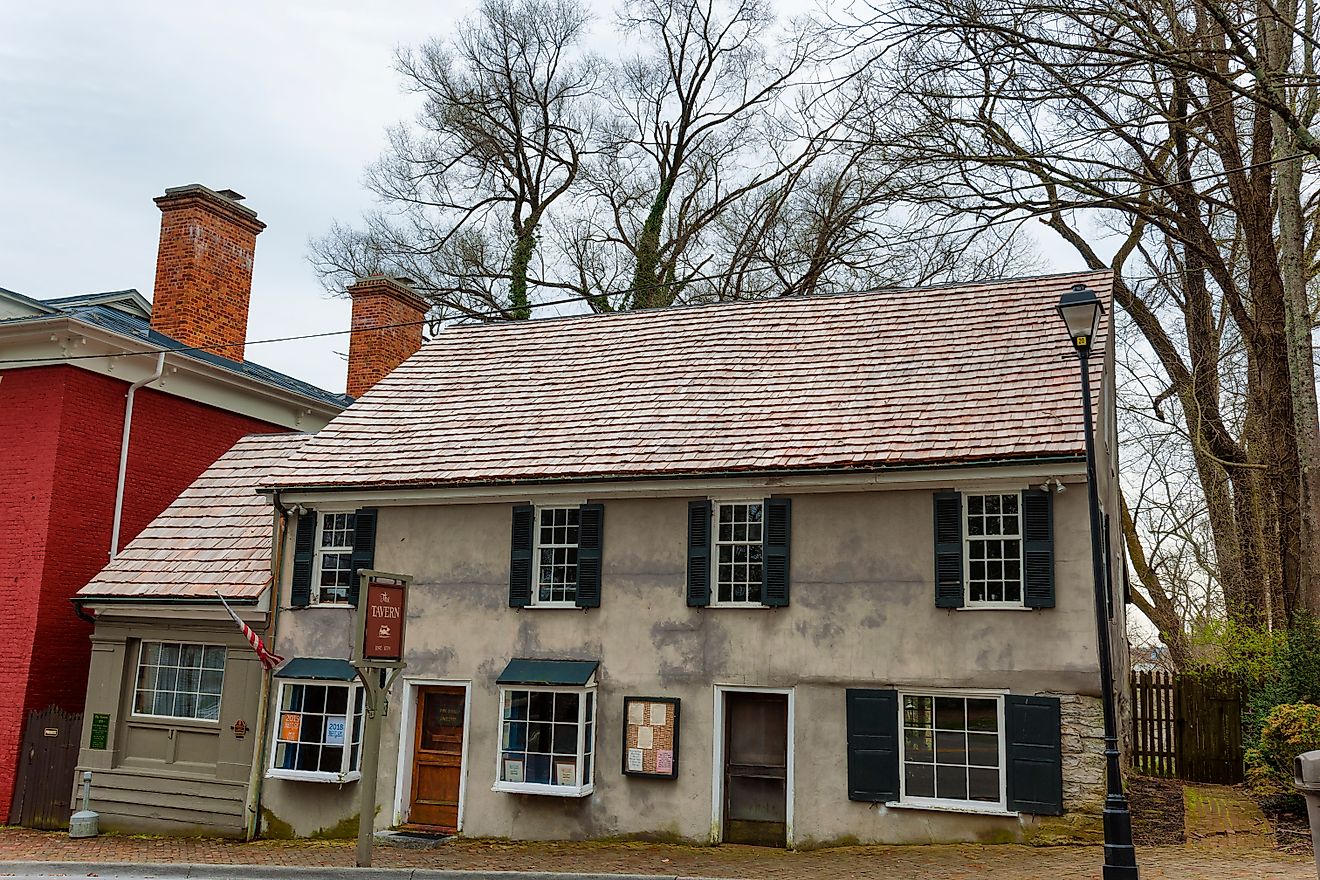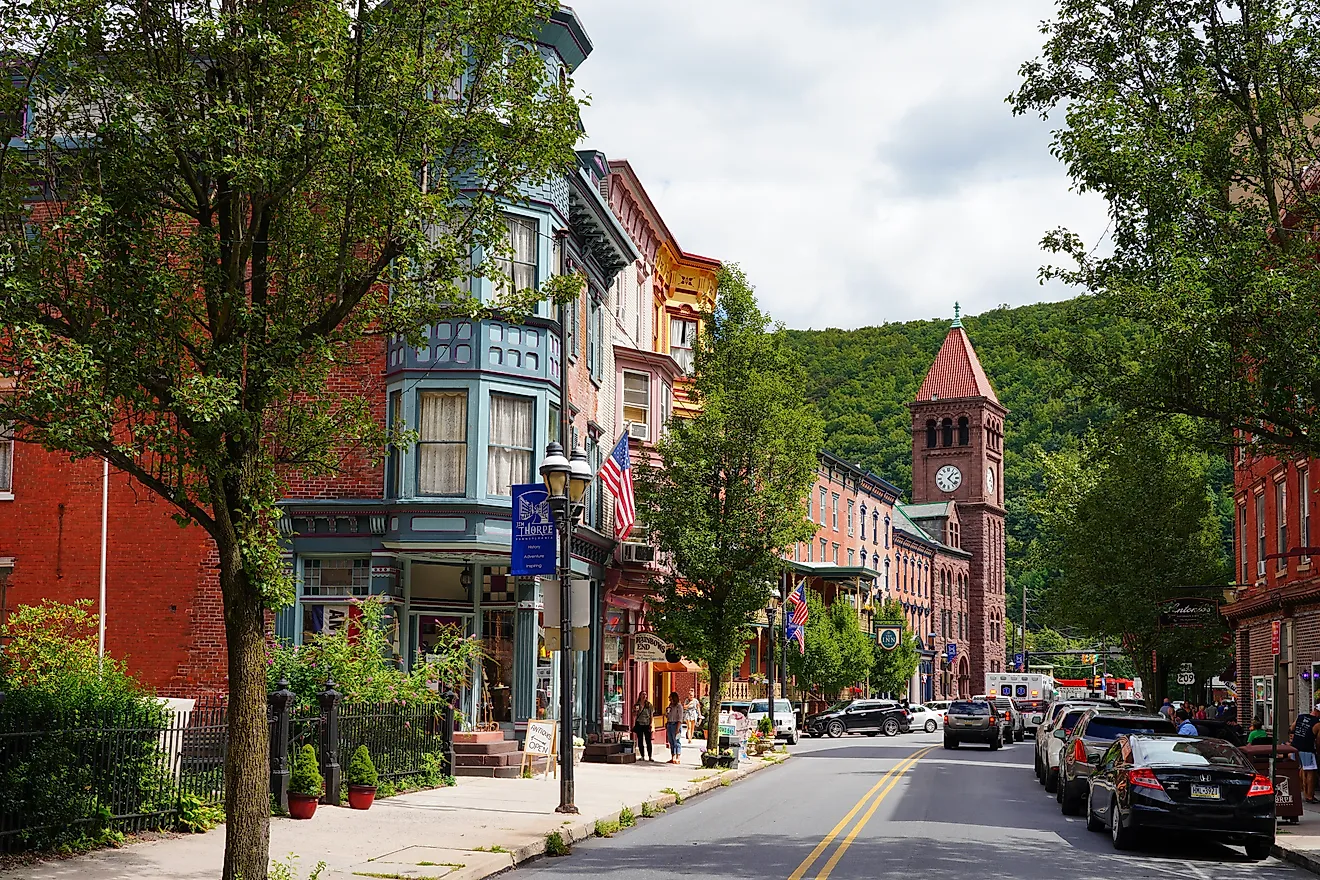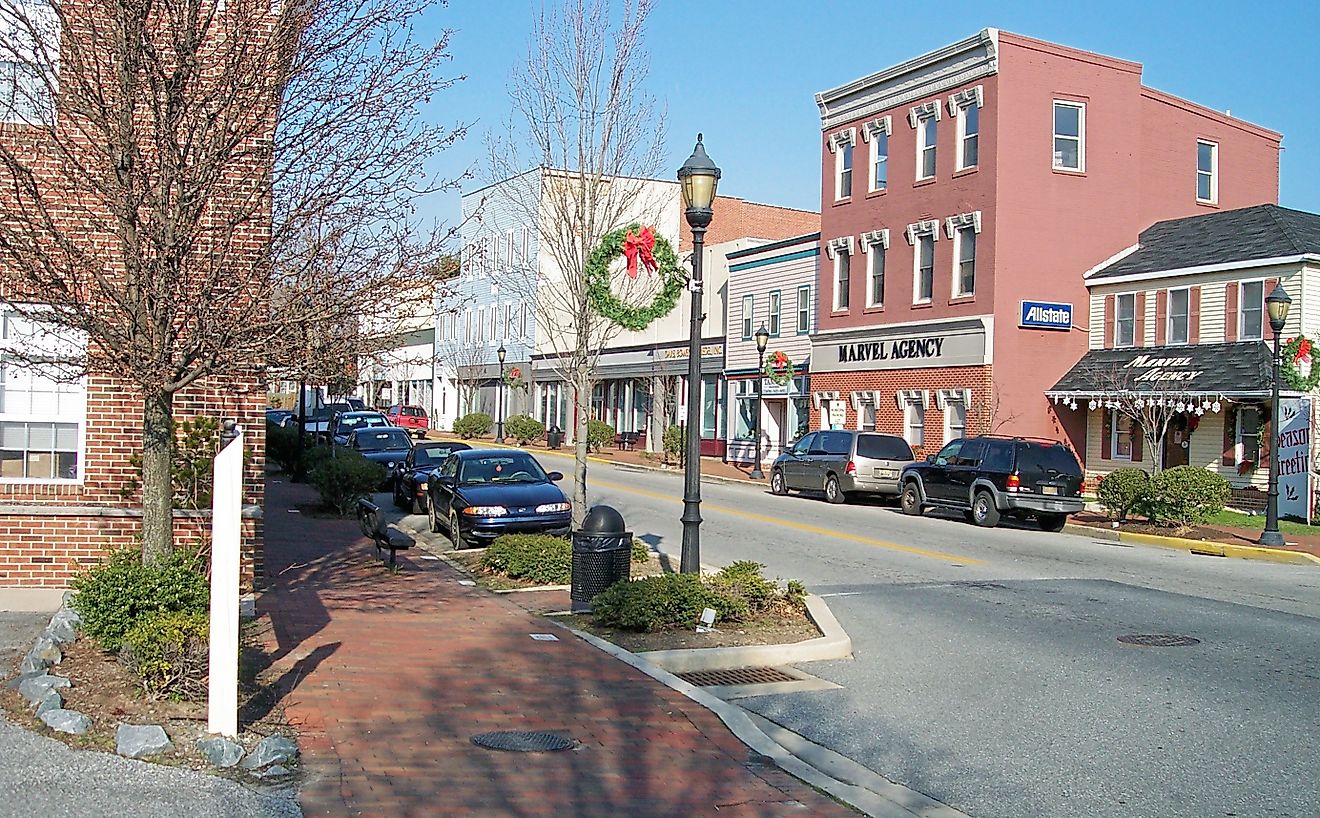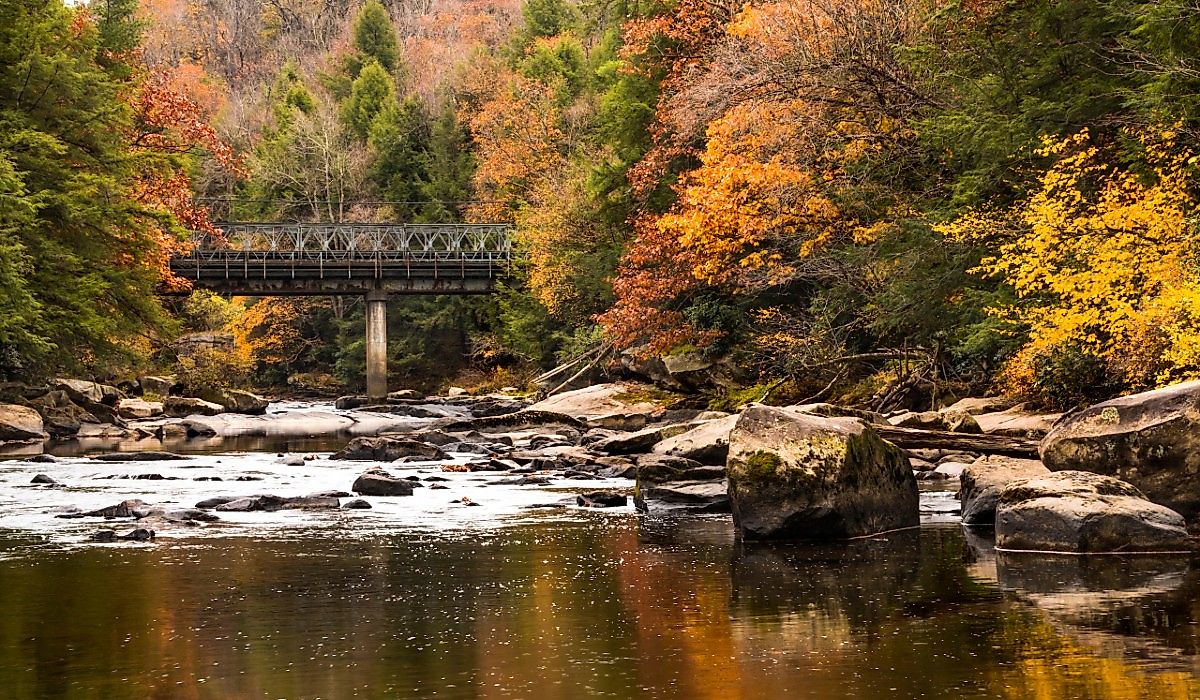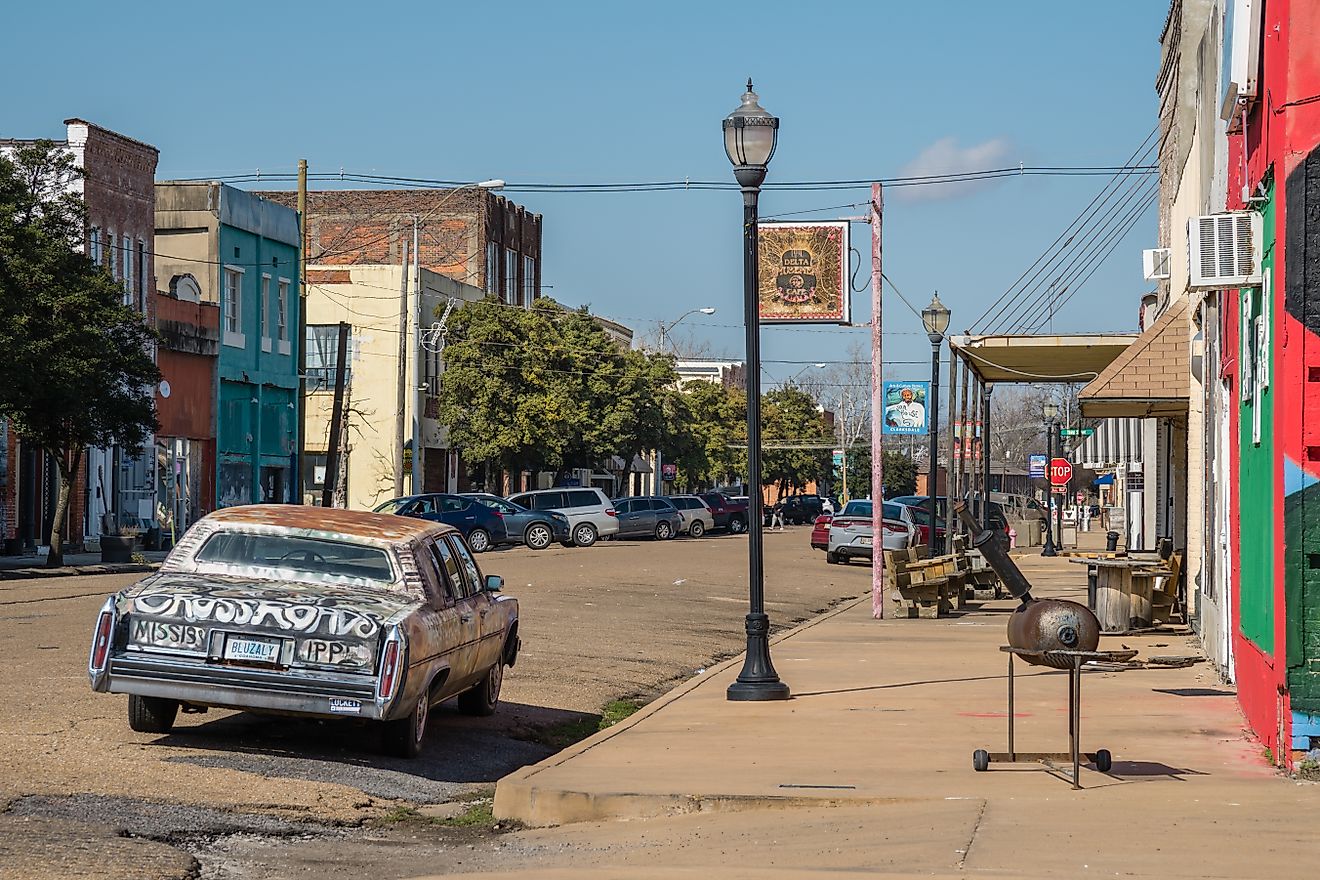
2025's 13 Most Scenic New York Towns
New York isn't just skyscrapers and overcrowded subways. Between the city's shadow and the Canadian border lies a state carved by glacial lakes, ancient mountains, and rivers that still shape the land. Some towns here feel almost accidental, wedged into valleys, perched beside cliffs, or clinging to lake edges as if they had grown there. The scenery doesn't play a background role in these New York towns; it's the whole story. These are places where fog rolls off ridgelines, the Atlantic Ocean catches the sky, and rivers run wild. And if you haven't seen them, now is the time to explore the most scenic New York towns in 2025.
Sag Harbor
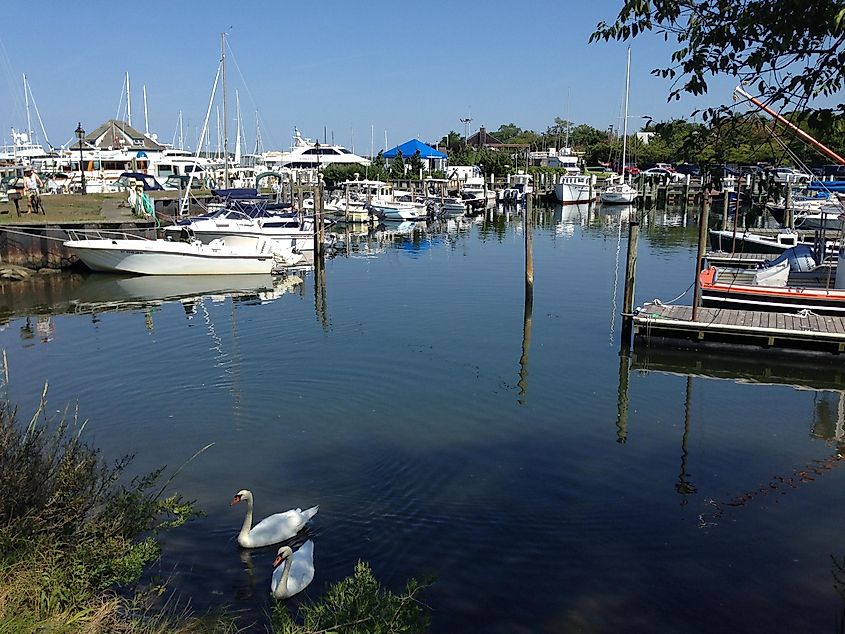
Sag Harbor is a historic village on the eastern end of Long Island, straddling the towns of East Hampton and Southampton along the sheltered waters of Gardiners Bay. Once one of the busiest whaling ports in the United States, the village is now a playground for wealthy tourists in the summer months. However, the town's connection to nature is evident when you step off Main Street and into one of its nearby bayside parks or protected areas.
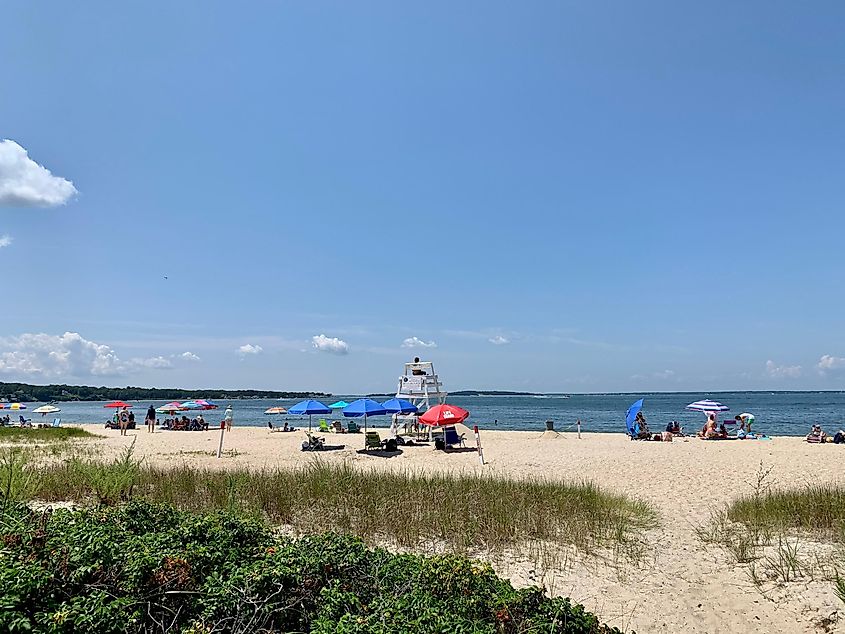
Just outside of town, the Elizabeth A. Morton National Wildlife Refuge spans 187 acres across Jessup's Neck Peninsula. Trails here pass through oak-cedar forests, freshwater ponds, and along a two-mile-long beach, where white-tailed deer, box turtles, and migratory songbirds are common sights. Inside the village, the Linda Gronlund Memorial Nature Preserve offers a gentler walk on the forested Gronlund Trail Loop. Along the shoreline, calm bay beaches like Havens Beach and Foster Memorial Beach (also known as Long Beach) provide access to swimmable waters.
Cooperstown
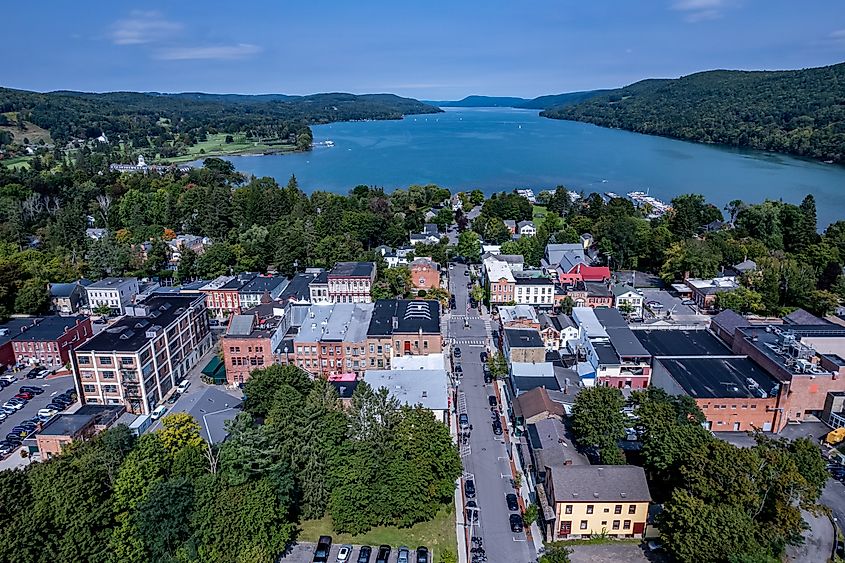
Cooperstown sits at the southern edge of Otsego Lake, a 7.8-mile-long, glacier-formed lake that, in parts, is over 160 feet deep. While best known for its connection to baseball, the town is ringed by natural escapes. Glimmerglass State Park, located outside of town at the lake's northern end, offers year-round hiking, as well as swimming in the summer months.
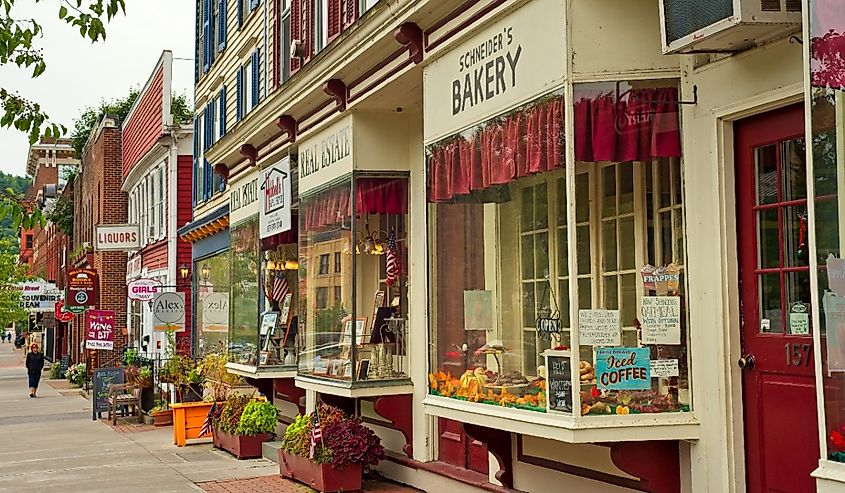
In winter, it transforms into a snowshoeing paradise. The most beloved trail in the park is the Sleeping Lion, which leads through maple forests to lake views. It's called this because from certain angles, the trail's summit, Mount Wellington, looks like a proud lion deep in sleep. Just to the southeast of town is another well-traveled destination for hiking, the Clark Tower Trail, which is used for biking and cross-country skiing in the winter.
Aurora
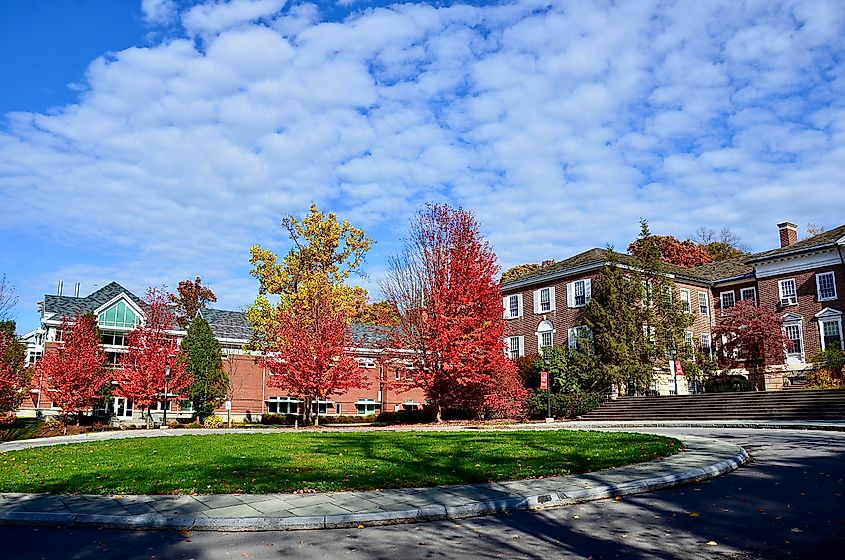
On the eastern shore of Cayuga Lake is the small village of Aurora. Its entire village center is easily walkable, with porches and docks offering wide-open views of the water and glimpses of some of the many wineries, which are as easy to access via boat as they are by car. Just south of town, Long Point State Park is the go-to for five miles of hiking trails, picnic spots, and multiple great ways of catching a shoreline sunset. It's also one of the stops along the Cayuga Lake Blueway Trail, with a boat launch popular among anglers and paddlers. In town, Lake Glass Beach shimmers beside Little Creek, while the many inns of Aurora offer a surprising range of outdoor activities, from kayaking to archery and guided fishing trips.
Shelter Island
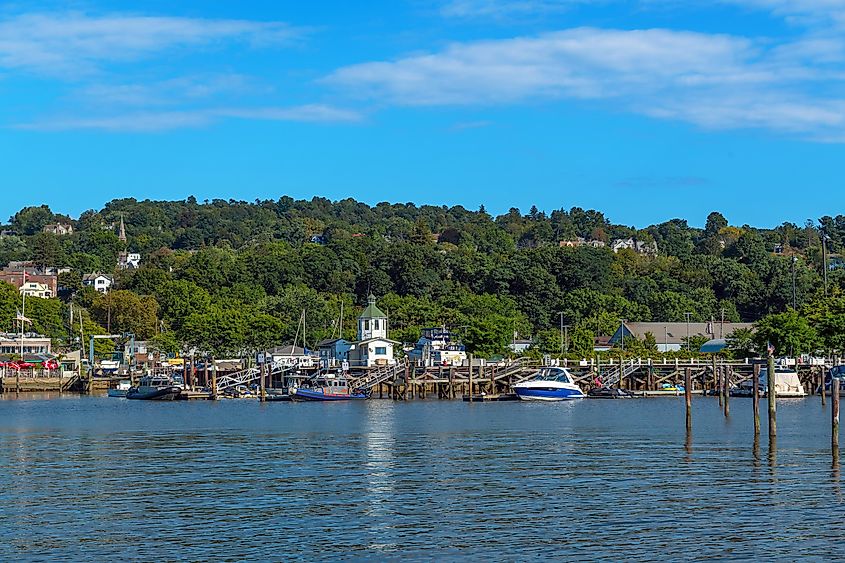
While officially part of Suffolk County's North Fork region, Shelter Island feels like its own world. Just 27 square miles in size, it's home to salt marshes, quiet beaches, forested trails, and the 2,350-acre Mashomack Preserve, often called the "Jewel of the Peconic." It is a rare coastal wilderness that stretches from the island's belly to its southern edge. This protected area encompasses tidal creeks, woodlands, and meadows teeming with wildlife, ranging from ospreys to red foxes. The island's curved coastline creates natural coves and inlets, marking it one of the most scenic places to paddle around.
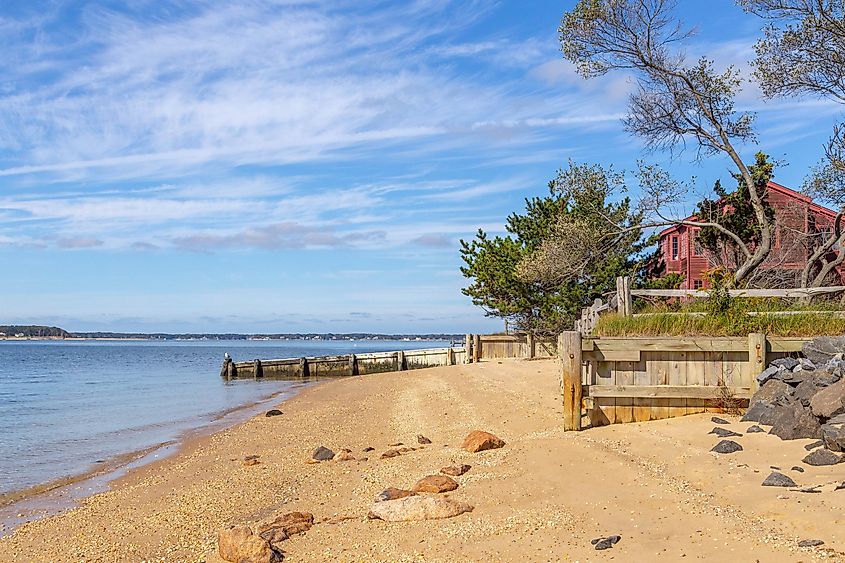
Visitors often explore the shoreline by kayak or paddleboard, or spend slow days on calm beaches like family-friendly Wades Beach and Crescent Beach (also called Louis' Beach). Shell Beach, by contrast, is narrow and wild, known more for shelling and birdwatching than swimming. With ferries running year-round, walk-on and vehicle access is simple.
Lake Placid
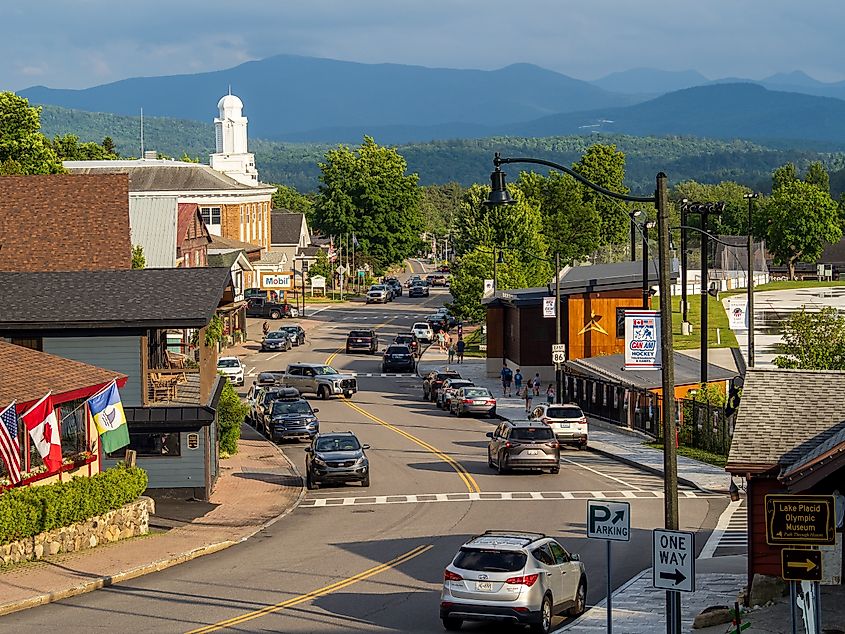
Lake Placid blend Olympic legacy with some of the most stunning mountain scenery in the Adirondacks and the entire Northeast. Just steps from downtown, Mirror Lake offers a peaceful place to paddle in the summer, and transforms into a skating and dog sledding haven in winter. On the far side of town lies the larger, namesake Lake Placid, which stretches into two primary basins separated by islands like Moose and Buck.
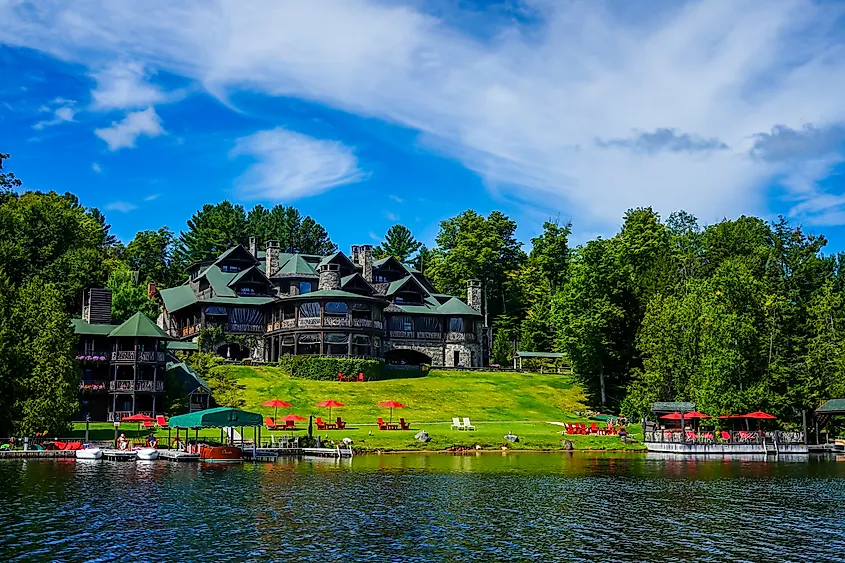
Boating is a major pastime here, especially in the warmer months, with launch points available around the lake. Just outside the village, the Brewster Peninsula Trails wind through pine forest along lakeshore ledges, offering year-round access for hiking, birdwatching, as well as snowshoeing in winter. Across the water, the peaks of Whiteface Mountain and the McKenzie Range rise sharply, often reflected in the still surface below.
Cold Spring
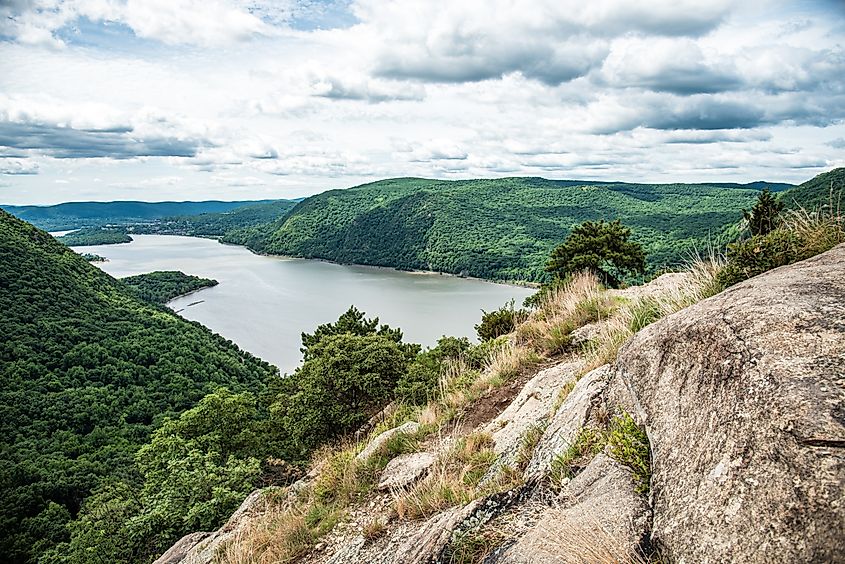
Cold Spring sits tight against the Hudson River, where cliffs, marshland, and forest all converge on a village of 19th-century storefronts and a storybook charm. Just steps away from the main drag, Dockside Park opens directly onto the river with an uninterrupted view of Storm King Mountain. Trails fan out in every direction here: the rugged scramble up Breakneck Ridge is outside of town but a major tourist attraction. Closer to the village are the cliffside paths of Hudson Highlands State Park and the quieter shoreline loops around Little Stony Point.
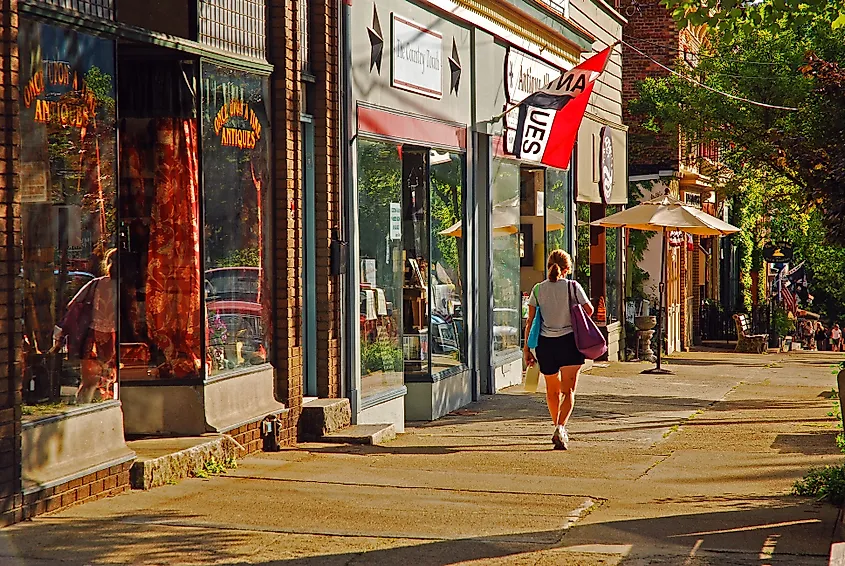
South of town, Constitution Marsh Audubon Center and Sanctuary stretches out into the estuary. It's 270 acres of tidal wetlands, teeming with herons, fish, and osprey. For a gentle walk with rich history, follow Foundry Brook through the West Point Foundry Preserve, where ruins of America's first ironworks now sit among trees and trails.
Saranac Lake
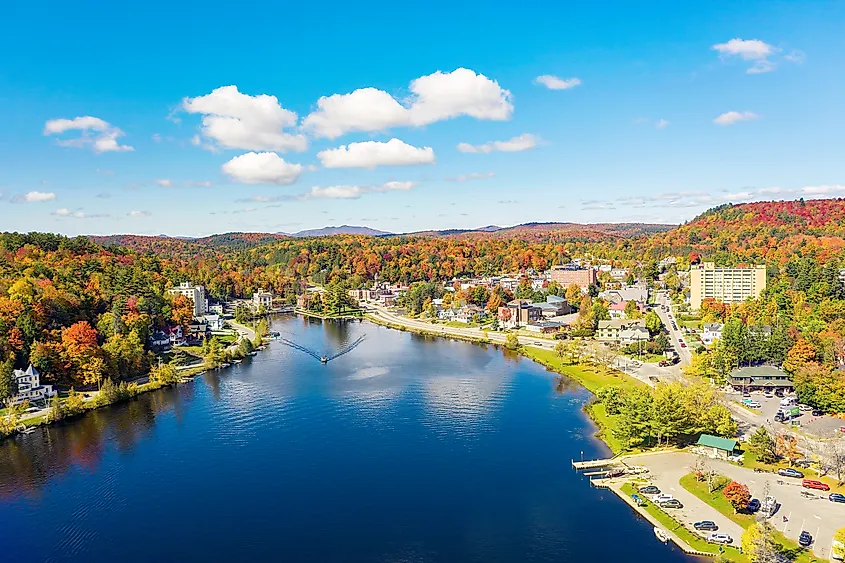
Saranac Lake, located in the Adirondack Mountains, takes its name from the three connected Saranac Lakes, Upper, Middle, and Lower. Each of them is linked by the Saranac River, which flows right through downtown. From there, visitors can launch a kayak or canoe onto the river for a calm paddle. They can also push out from the Lake Flower boat launch toward Oseetah Lake to enjoy its mountain views. When it's time to dry off and lace up some hiking boots, the Baker Mountain trailhead at Moody Pond leads up to one of the area's favorite peaks for impressive views.

In the winter, the nearby Dewey Mountain Recreation Center transforms into a community hub for cross-country skiing and snowshoeing, with lighted trails, ski rentals, and terrain for all skill levels. The entire town is surrounded by over 79,000 acres of forested land and nearly 19,000 acres of lakes, ponds, and rivers, making nature the star attraction and outdoor activities near limitless.
Watkins Glen
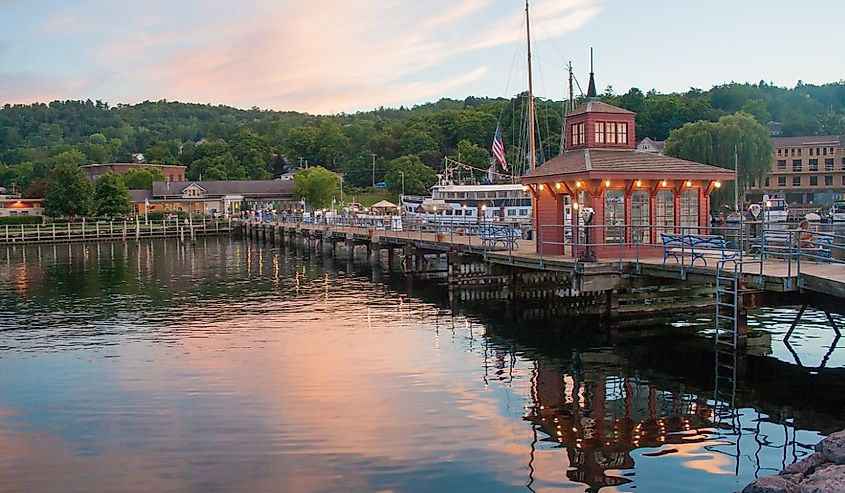
At the southern tip of Seneca Lake, Watkins Glen balances small-town quiet with geological spectacle. The village is best known for Watkins Glen State Park, where the 2.4-mile Gorge Trail follows stone stairways, footbridges, and tunnels through ancient shale and sandstone. Along the way, 19 waterfalls tumble between high cliffs, including Rainbow Falls, which visitors can pass directly behind.
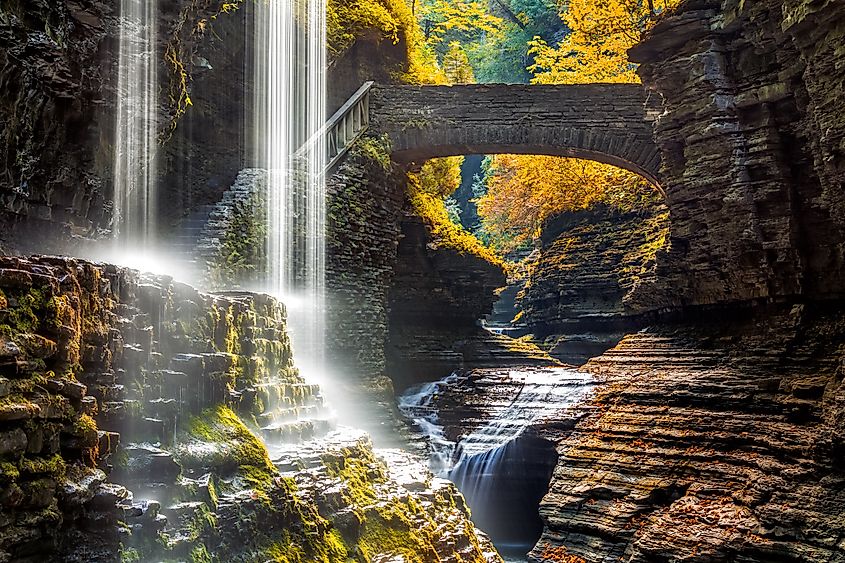
A short drive out of town brings you to Catharine Creek Wildlife Management Area, a 1,000-acre marsh formed by sedimentation and lake level manipulation. Its wetlands are now a sanctuary for migrating birds, deer, and an assortment of amphibians. Though Watkins Glen is compact, it opens outward toward the deep blue of the lake and wineries that dot its hillsides.
Port Jefferson
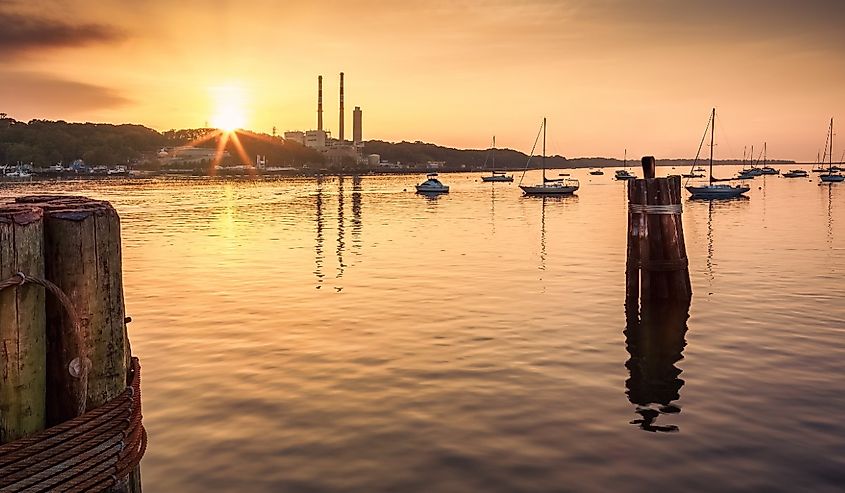
Tucked into Long Island's North Shore about 60 miles from Manhattan, Port Jefferson sits along a sheltered harbor that is as much a part of daily life as the sidewalks and storefronts that line Main Street. Harborfront Park and Centennial Park mark the waterfront's edge, where locals walk dogs, visit the small beach, or catch sight of ferries docking from Connecticut across the Long Island Sound.
Just outside of the town's limits, McAllister County Park and Mt. Misery Point jut into the Sound, with beach paths and wooden terrain running alongside tidal flats and sandy coves. Pirate's Cove hides in plain sight nearby, shielded by cliffs and reachable only on foot or by water. The harbor itself hums with activity, including fishing lines and kayaks cutting across the calm waters. On the Long Island Sound side of town, beaches like Port Jefferson Village West feature rougher waters and wind that reshape and erode the shoreline.
Ticonderoga
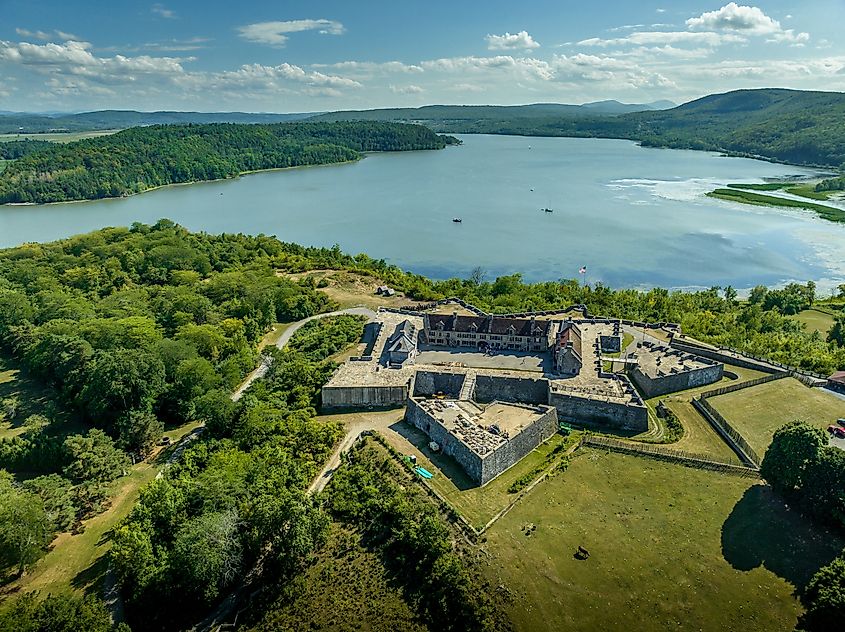
Ticonderoga sits where two lakes almost meet, Lake George to the south, and Lake Champlain to the north. They are linked by the swift-moving La Chute River, which drops 220 feet over its three-mile run through town. This historic waterway once powered mills; today it's bordered by the scenic La Chute River Walk Trail, connecting to Bicentennial Park and a series of cascades that frame the downtown in sound and motion.
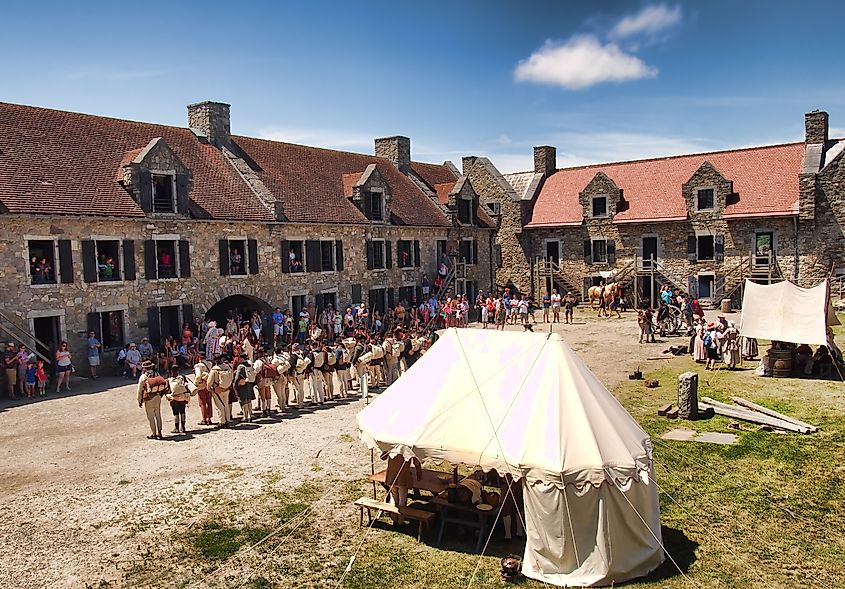
Just outside of town, Fort Ticonderoga anchors the region's past with expansive grounds and commanding views, while the King's Garden on site offers one of the oldest cultivated landscapes in America. For a full panorama, drive or hike up Mount Defiance, where the Adirondacks unfold in all directions.
Alexandria Bay
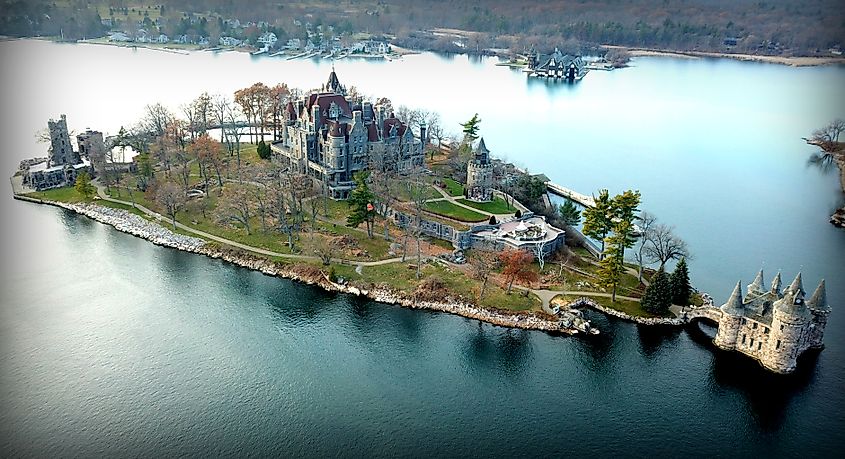
Alexandria Bay is the New York side heart of the Thousand Islands region, an extensive archipelago of stone islands rising from the St. Lawrence River. The village fronts the river with rocky shorelines and sandy inlets under the shade of towering pines. Tour boats leave daily from the docks and weave through the channels, pass wooded islands, and circle the legendary Boldt Castle on Heart Island. For those who prefer to stay grounded, the 115-acre Otter Creek Preserve sits just south of downtown and includes 1.9 miles of trails through hardwood groves and over creeks, with a suspension bridge and a wildlife tower.
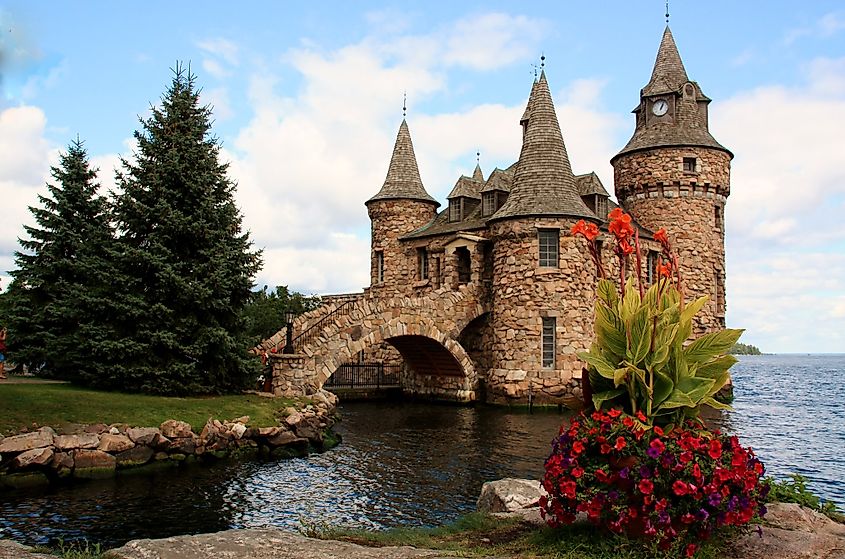
In the winter, the preserve turns into a great place for cross-country skiing and snowshoeing. But in the summer, it's the place to spot the golden-winged warbler, which returns here from wintering grounds in Central and South America. On the river itself, anglers seek out bass, muskellunge, and salmon in deep, cold channels. Those without scuba experience can still glimpse sunken shipwrecks via glass-bottom boat tours that leave right from town. And for beach goers, the tiny Alexandria Bay Town Beach is a peaceful spot to sit and watch the river move.
Skaneateles
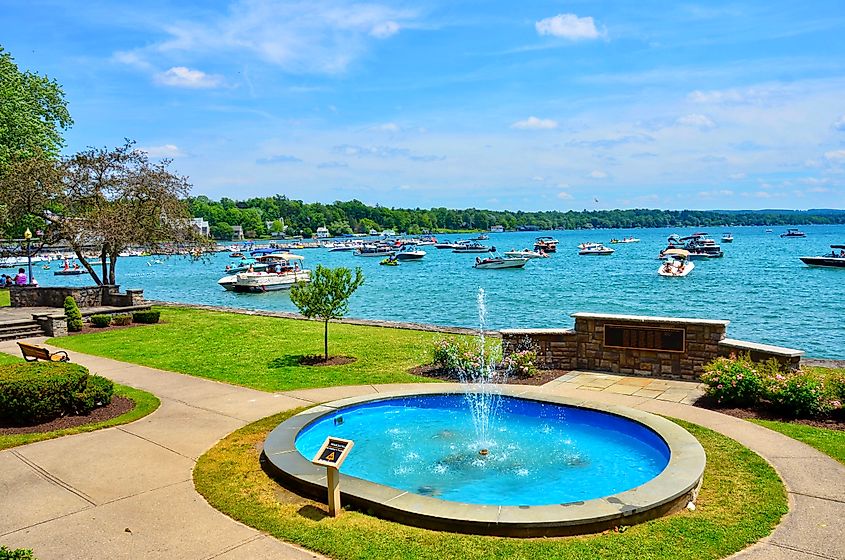
Skaneateles Lake spans nearly 16 miles and is famed for its clear, emerald waters. On its shores is the town of Skaneateles, a place more reminiscent of some European vacation spots than most American small towns. At the village edge, Clift Park offers sweeping lake views, a historic pier, a swimming area, landscaped gardens, and a classic gazebo. It all forms a communal green space directly on the water.
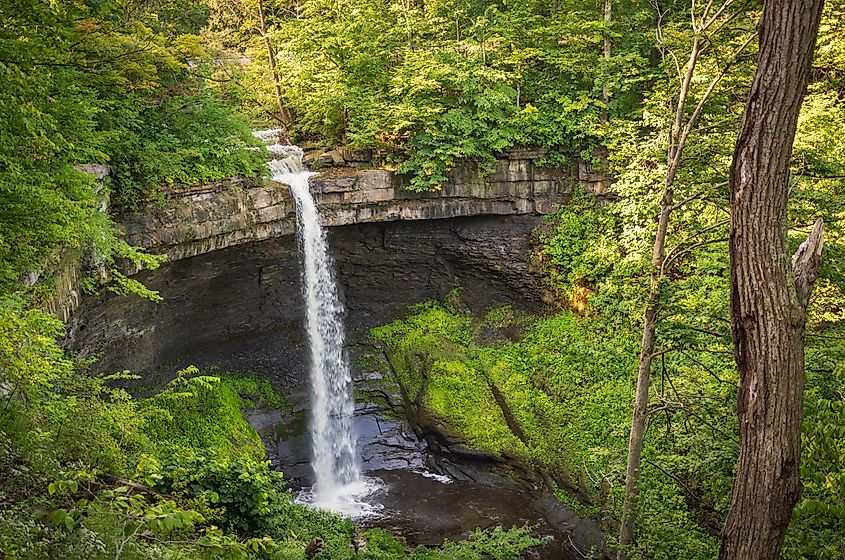
Out of town, the Charlie Major Nature Trail follows an old Skaneateles Short Line railbed for approximately 1 mile between Mill Road and Crow Hill Road. The shaded corridor crosses Skaneateles Creek three times via wooden bridges and skirts the remains of historic mills. Nearby, the Bahar Nature Preserve leads past Carpenter Falls, an impressive 90-foot cascade dropping into a narrow gorge.
Montauk
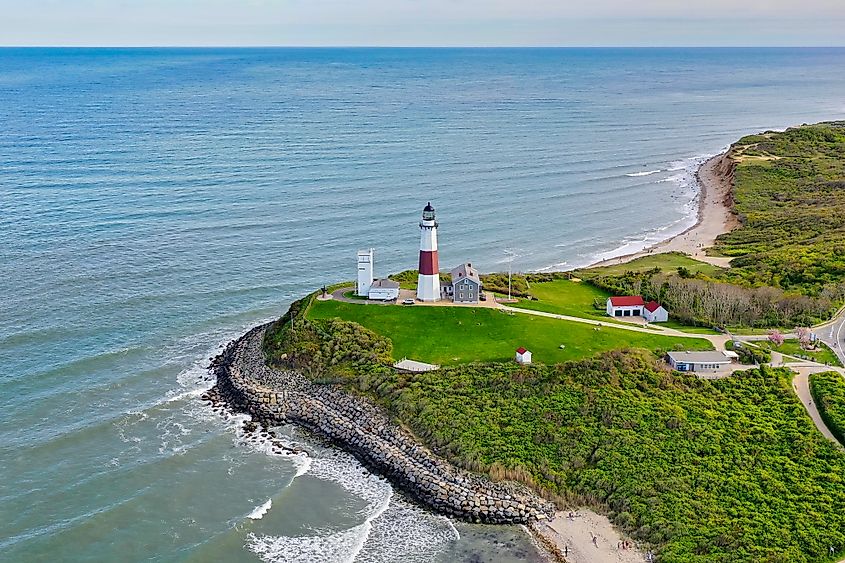
At the easternmost point of Long Island, where land gives way to the open Atlantic, Montauk carries the nickname "The End" with rugged pride. Though it's technically part of the Hamptons, this historic fishing village has long carved out its own identity, one defined by wind-swept dunes, surf-pounded beaches, and the dramatic cliffs of Montauk Point. Montauk State Park surrounds the iconic Montauk Lighthouse, commissioned by George Washington and completed in 1796.
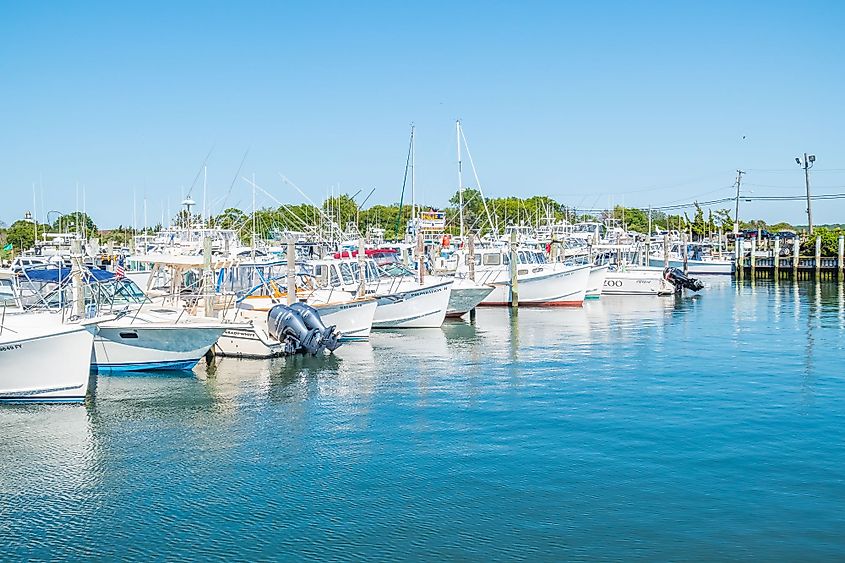
Just west, Shadmoor State Park weaves through freshwater wetlands and high shale cliffs, while Amsterdam Beach Preserve offers unspoiled coastline at the end of a moderate woodland trail. The area is home to six state parks in total, each offering its take on Montauk's rough-hewn beauty. The town is also known for incredible fishing opportunities and even has places to horseback ride through open fields and along the coast.
What sets these towns apart in 2025 isn't just their scenery; it is how effortlessly that beauty fits into everyday life. Trails begin where sidewalks end. Lakes and rivers double as gathering places. And each season reveals something new without ever asking anyone to look too far. Whether you are in the mountains or by the sea, nature in the state of New York is the main event. So go. Before the next quiet morning slips by without you.
